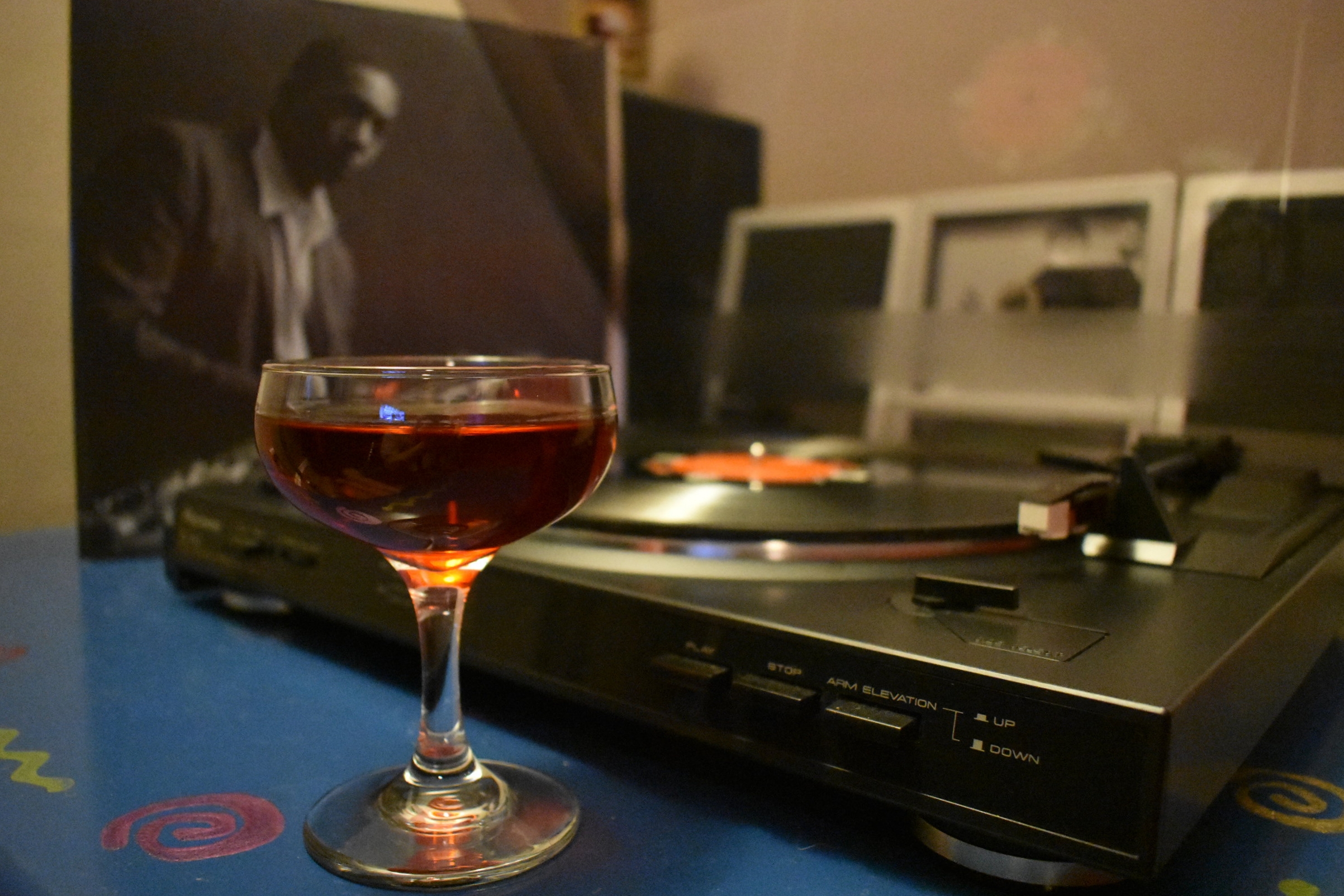There’s a memorable scene in Raiders of the Lost Ark in which whip-wielding archaeologist Indiana Jones confronts his rival, René Belloq, in a Cairo café. There Belloq expounds upon one of the central truths of archaeology. “Look at this,” he says, holding up a silver timepiece, dangling from a chain. “It’s worthless. Ten dollars from a vendor in the street. But I take it, I bury it in the sand for a thousand years, [and] it becomes priceless.”
Belloq may be smug and condescending (and later he’ll have his face melted off), but he’s right. Value is relative.
It’s a principle that holds true for all manner of buried treasure; and for jazz fans, discovering an unreleased album by the late John Coltrane and his classic quartet is, in the words of Coltrane contemporary Sonny Rollins, “like finding a new room in the Great Pyramid.”
It’s hard to disagree. But are the contents of that room as valuable as the discovery itself?
Both Directions at Once
Posthumous releases are a decidedly mixed bag. Certainly, plenty of gems have been uncovered, broadening our understanding of beloved artists whose light was snuffed out before we could appreciate the full scope of their brilliance. More often, though, a record company or estate will cobble together some tracks that weren’t good enough to release during the artist’s lifetime and frame them as an essential chapter of their catalogue.
That said, I was wary of the anticipation surrounding the release of John Coltrane’s Both Directions at Once: The Lost Album. The record comprises material recorded by the legendary saxophonist and his classic quartet (McCoy Tyner, piano; Elvin Jones, drums; Jimmy Garrison, bass) on March 6, 1963, at engineer Rudy Van Gelder’s studio in New Jersey. It contains seven tracks (plus seven alternate takes in the deluxe package, which of course I bought), only one of which had previously seen the light of day. Coltrane was two years into his contract with Impulse! Records at the time.
“Lost Album”
The album’s subtitle is something of a misnomer; it’s not clear that anyone even knew the recording existed, so to imply that musical archaeologists had been searching for this “lost” treasure is a bit of a stretch.
And it can only be considered an “album” in the most liberal sense of the word. The session was recorded during a break in the band’s run at New York’s Birdland jazz club; the next day, in the same studio, they would record an actual album with vocalist Johnny Hartman. The date was likely just an exploratory session, not something intended for release. Coltrane’s son Ravi posited as much in a recent interview with the venerable Downbeat magazine: “For me it did feel like, ‘OK, well, we’re doing a few sessions this week. One of them will maybe get the band warmed up, so why don’t we lay down some of the things we have been performing at Birdland all week?’”
As there was likely no great significance to the session at the time, the recording fell into obscurity. In fact, the master recording was eventually destroyed by Impulse’s parent company, ABC, as a space-saving measure. Fortunately, Van Gelder gave Coltrane a copy of the recording, which Verve Records (the current parent company of Impulse) recovered from the family of Trane’s wife in the early 2000s.
Joy of Discovery
It may have been just a typical studio session for Coltrane (to the degree that any creative episode in the life of one of greatest musical artists of the 20th century can be considered “typical”), but any new package bearing his name is a cause for celebration. And the novelty of hearing this material for the first time – particularly on vinyl, the format on which one would have experienced it had it been released contemporaneously – is a rare joy.
This isn’t some scratchy bootleg; it’s a crystal-clear studio recording of a jazz giant and his impeccable sidemen at what was arguably the height of their powers.
It can be uneven at times; pianist Tyner contributes gorgeous solos on some songs while sitting out other tunes entirely. There are passages that sound like the band is simply working out ideas instead of making a definitive statement. But there are also moments of majesty, like the 11-minute “Slow Blues.”
Discoveries like this often appeal largely to jazz academics and diehard fans; and in that respect, it serves as a valuable missing link in Coltrane’s development, between his commercially successful “My Favorite Things” in 1961 and his genre-altering masterpiece “A Love Supreme” in 1965.
But Both Directions at Once is more than just a historical document – it’s genuinely listenable. Taken as an album, it wouldn’t rank among Coltrane’s most renowned works. But for those of us who thought we’d heard everything Trane had ever recorded, the chance to experience something new truly is priceless.
Left Hand
The cocktail I’m pairing with the album also goes in multiple directions at once. The Left Hand has elements of both a negroni and a Manhattan. Created by New York bartender Sam Ross, then at Milk & Honey, it was a play on another negroni variation made by a fellow bartender, called the Right Hand.
I was introduced to the Left Hand recently at the Hawthorne in Boston and immediately fell in love with it. Most recipes online call for a maraschino cherry garnish, but since the Hawthorne version left that out, I’ve done the same.
1.5 ounces bourbon (I used Old Forester)
¾ ounce Carpano Antica sweet vermouth
¾ ounce Campari
2 dashes Bittermens Xocolatl mole bitters
Add all ingredients to a mixing glass. Stir with ice and strain into a chilled coupe glass.
* * * * * * * * * * * *
Copyright © Boston BarHopper. All Rights Reserved.




